(526) Kasumigajo Park
文字数 3,683文字
On this trip, we also visited Kasumigajo Park (霞ヶ城公園), where Nihonmatsu Castle (二本松城) is located, which is easily accessible from Nihonmatsu Interchange on the Tohoku Expressway.
Nihonmatsu Castle (also known as Kasumigajo Castle) was renovated extensively by Niwa Mitsushige (丹羽光重公), the first lord of Nihonmatsu Domain from 1643, but most of the buildings were lost in the Boshin War in 1868. In 1872, all remaining buildings were destroyed by the castle abolition order.
In 1982, the Nikai Yagura (二階櫓, two-story turret), Minowamon Gate (箕輪門), and Tamon Yagura (多門櫓) were restored with concrete.
The castle tower and the stone walls of the main citadel were developed from 1993 to 1995 at a cost of 530 million yen.
Currently, the ruins of Nihonmatsu Castle are the prefectural Kasumigajo Park (nationally designated historic site in 2007).
Nihonmatsu Castle, Tsuruga Castle, and Shirakawa-Komine Castle in Fukushima Prefecture are included in the “100 Greatest Castles in Japan” selected by the Japan Castle Foundation in 2017.
Kasumigajo Park is home to about 2,500 cherry trees in spring, and it is the venue for the "Nihonmatsu Chrysanthemum Dolls" festival in autumn.
Nihonmatsu Castle is a mountain castle, and to reach the remains of the castle tower, you must climb 100m up a slope from the parking lot. I also climbed the slope, which was exhausting.
Near the castle tower base, we met an elderly woman with a dog. She said to us, “I come here every day for my health.” She was carrying a bell. She said, “This is because there are some antelope around here, though there are no bears luckily.”
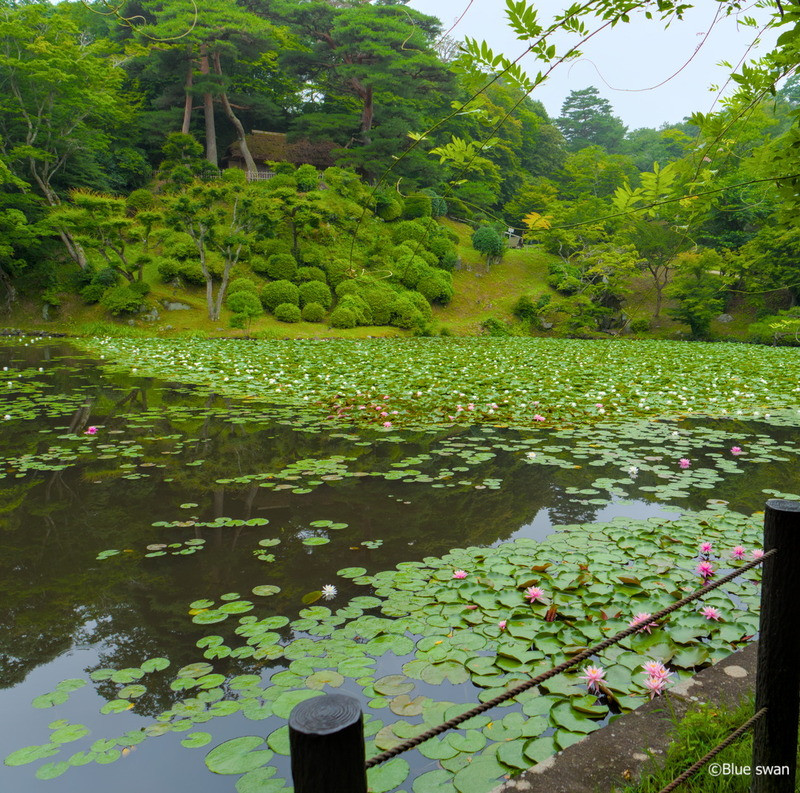
① This is Kasumigaike Pond (霞ヶ池). The thatched roof building is Senshintei (洗心亭). The wisteria vine on the right was transplanted from Chieko's childhood home.
※Chieko refers to a female Western-style painter "Takamura Chieko (高村智恵子)". She was born in Nihonmatsu City and was active in Tokyo from the end of the Meiji period to the Taisho period. She is better known as the protagonist of “Chieko Sho," (智恵子抄)" written by her husband, Takamura Kotaro (高村光太郎).
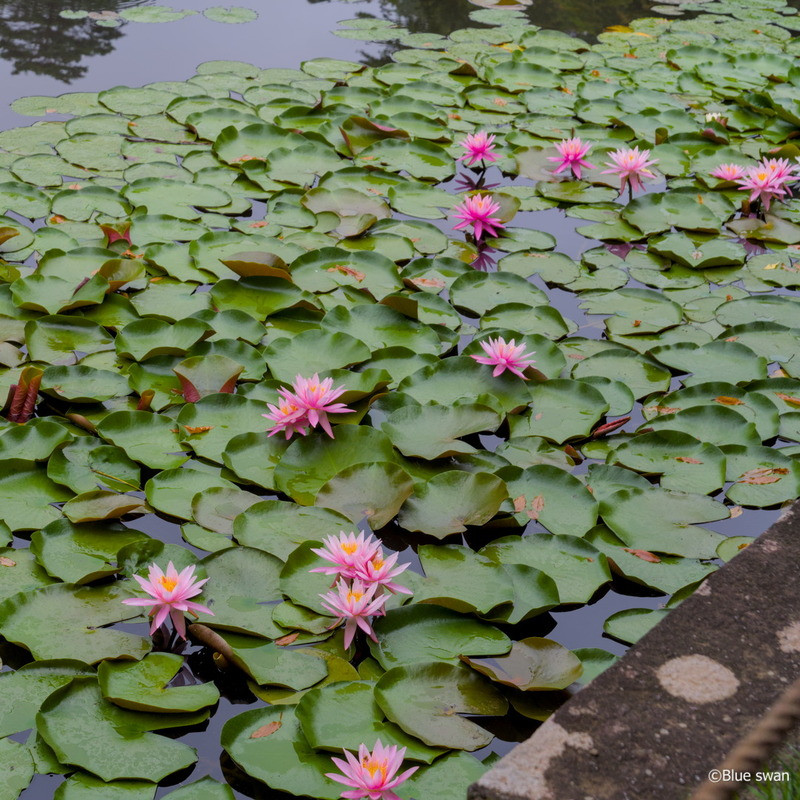
② These are water lilies at Kasumigaike Pond.
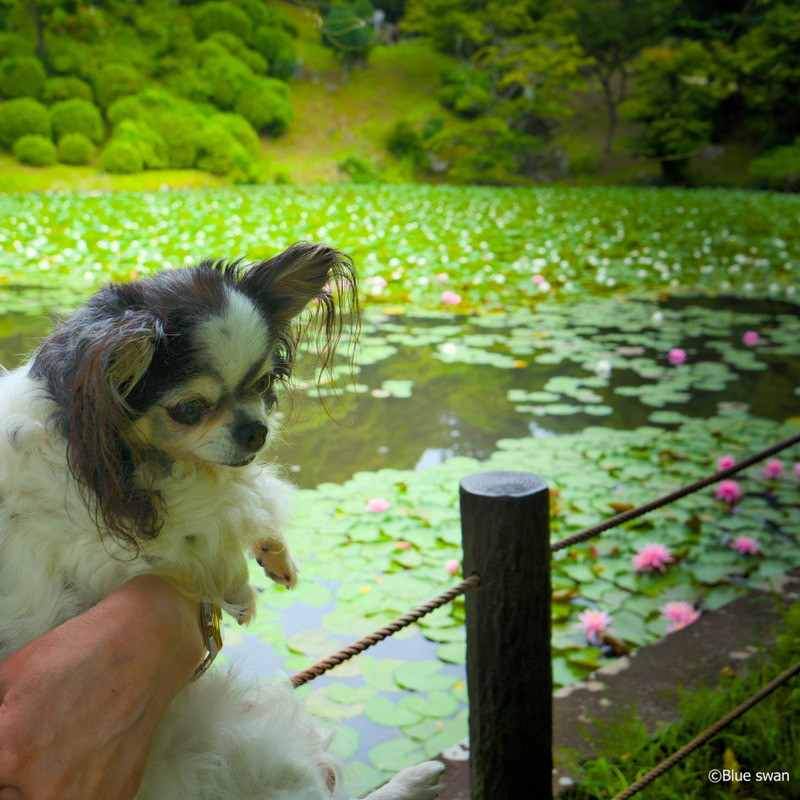
③ I am in front of the pond.
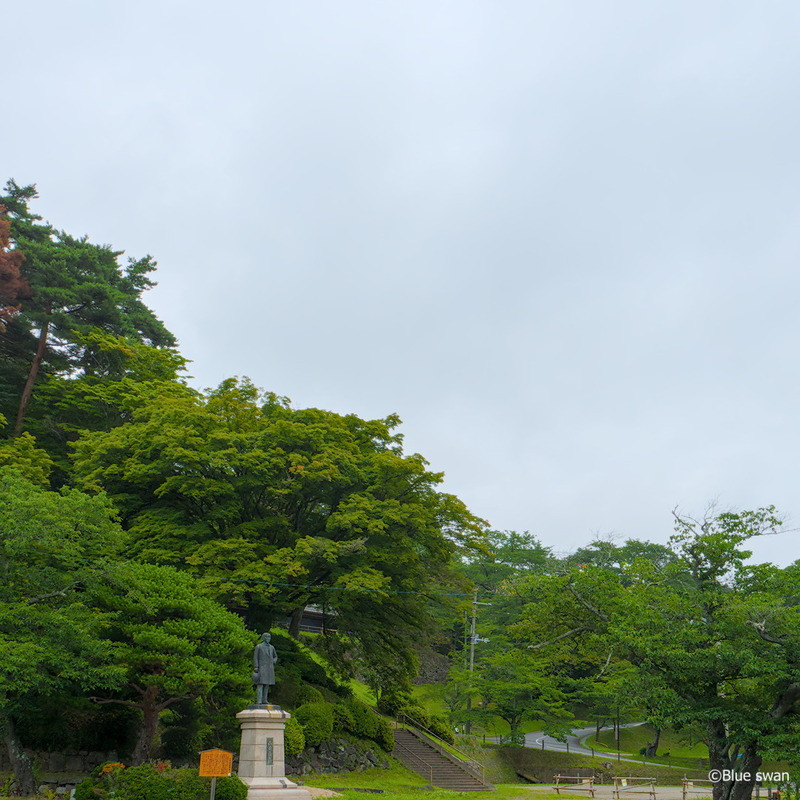
④ We've reached the trailhead which leads to the ruins of Nihonmatsu Castle. From here, we'll start climbing the hill.
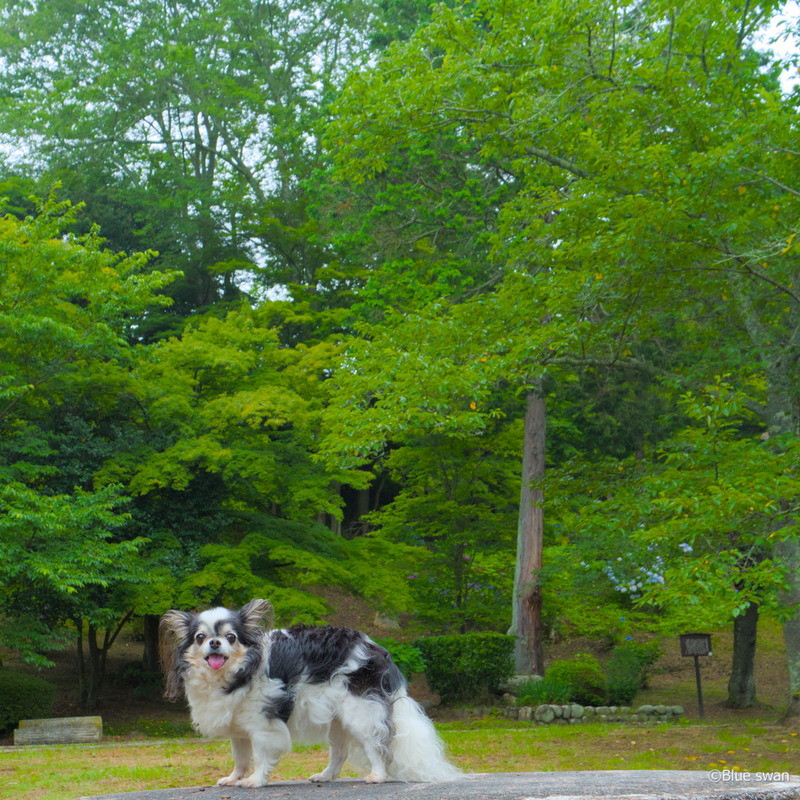
⑤ I am in the square in front of a gazebo.
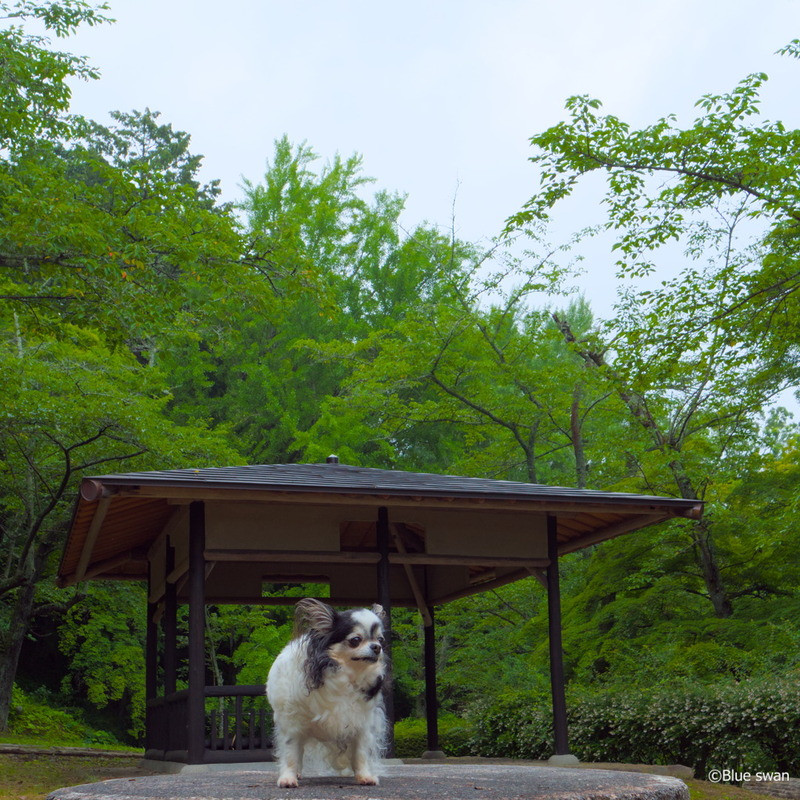
⑥ I am in front of the gazebo.
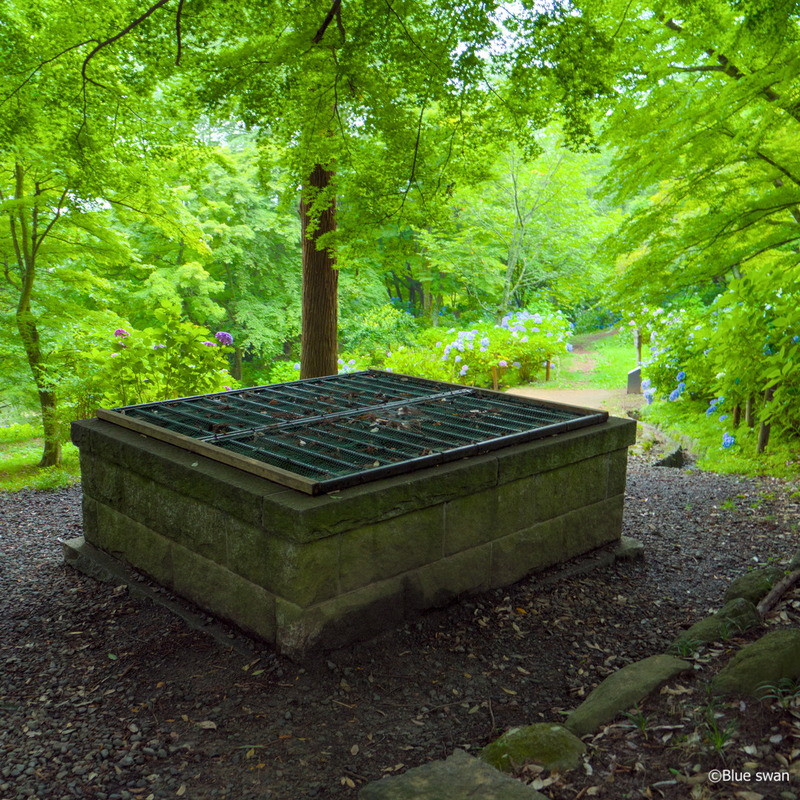
⑦ This is “Hikage Well (Sunlit Well)”. It is said to be one of Japan's three great wells, along with “Tsukikage Well (Moonlit Well)” in Chiba Prefecture and “Hoshikage Well (Starlit Well)” in Kanagawa Prefecture, and is 16m deep. This well was built around 1400.
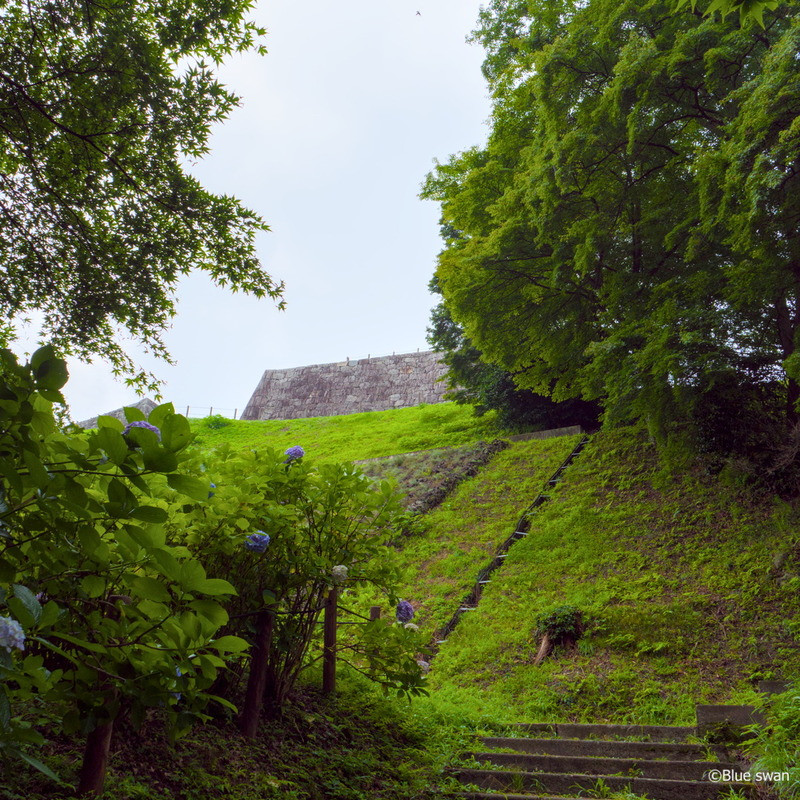
⑧ You can see the two-tiered stone wall. The grass-covered area below is the large stone wall.
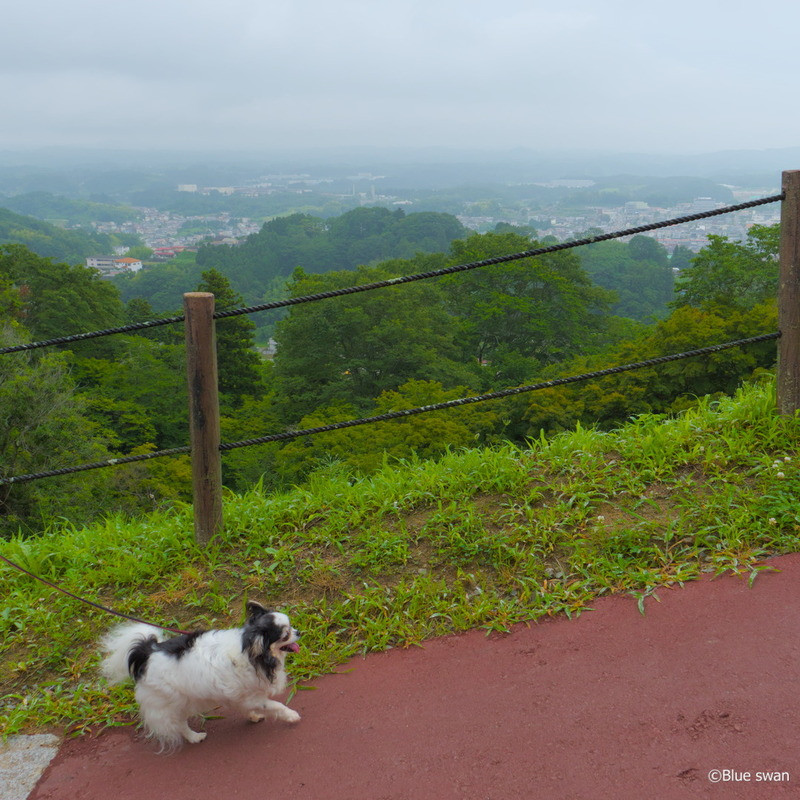
⑨ I’m walking up the large stone wall.
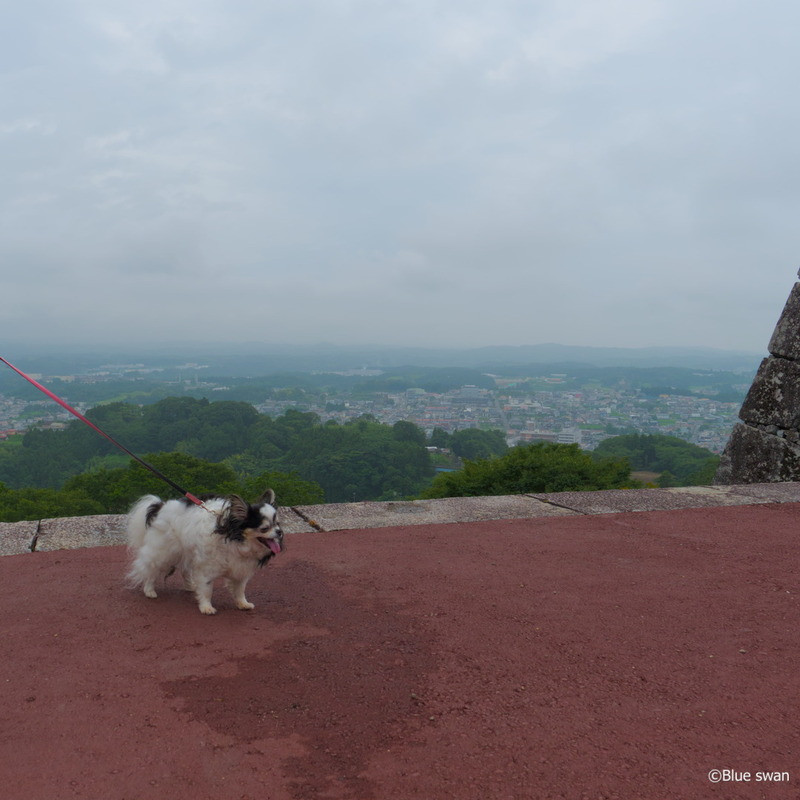
⑩ I’m climbing up the large stone wall.
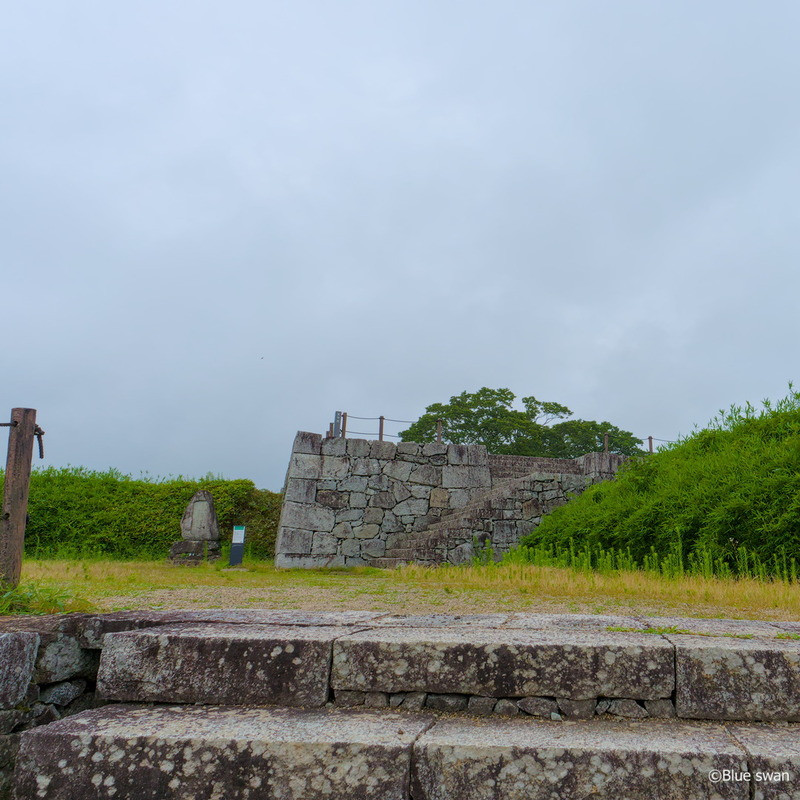
⑪ There are two more steps.
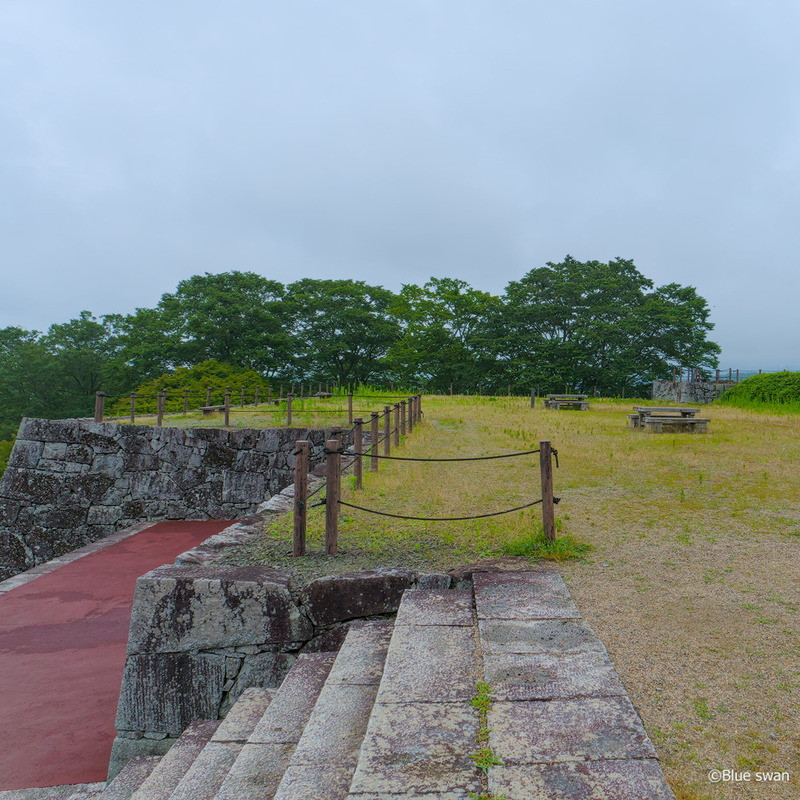
⑫ This is a photo of the remains of the main castle. You can see the Nishi Yaguradai in the back right. If it's clear, you can see Mt. Adatara there, too.
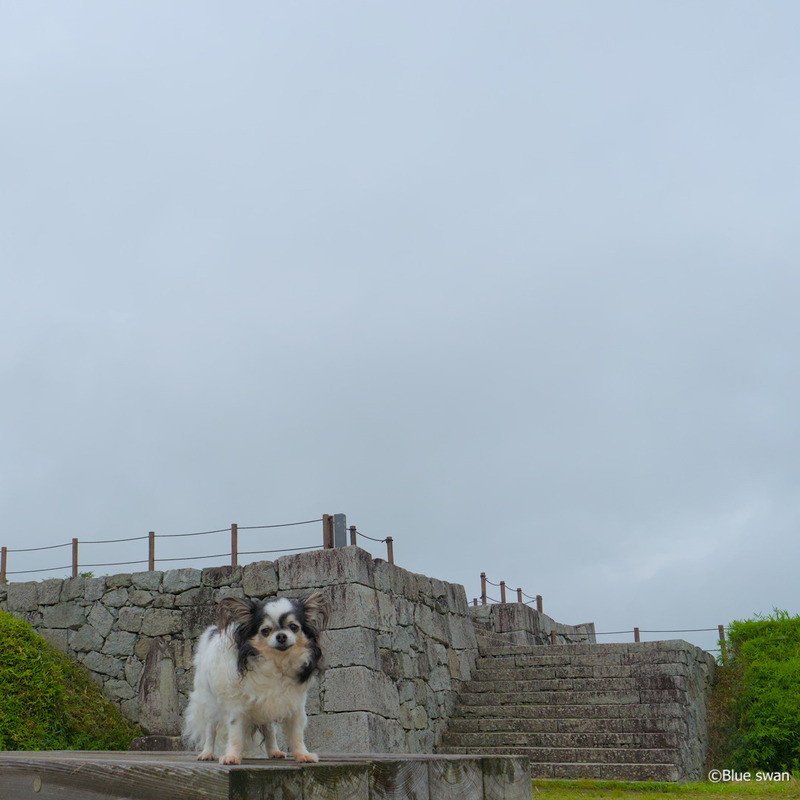
⑬ I am at the remains of the main citadel. The castle tower base can be seen in the background.
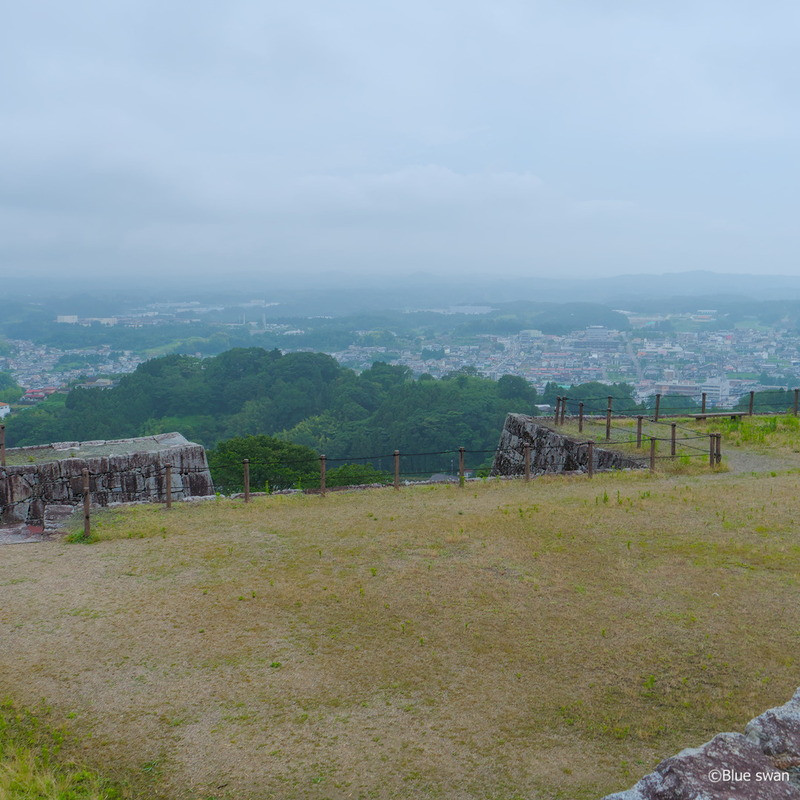
⑭ We’ve reached the castle tower base. This is the summit.
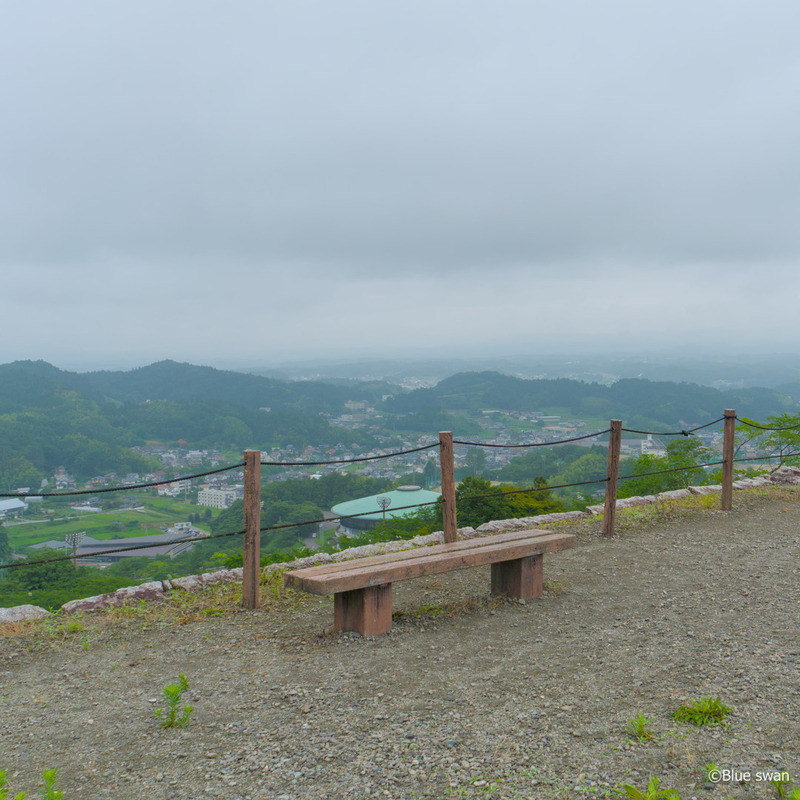
⑮ I’m looking east. The large green roof is Shiroyama Comprehensive Gym.
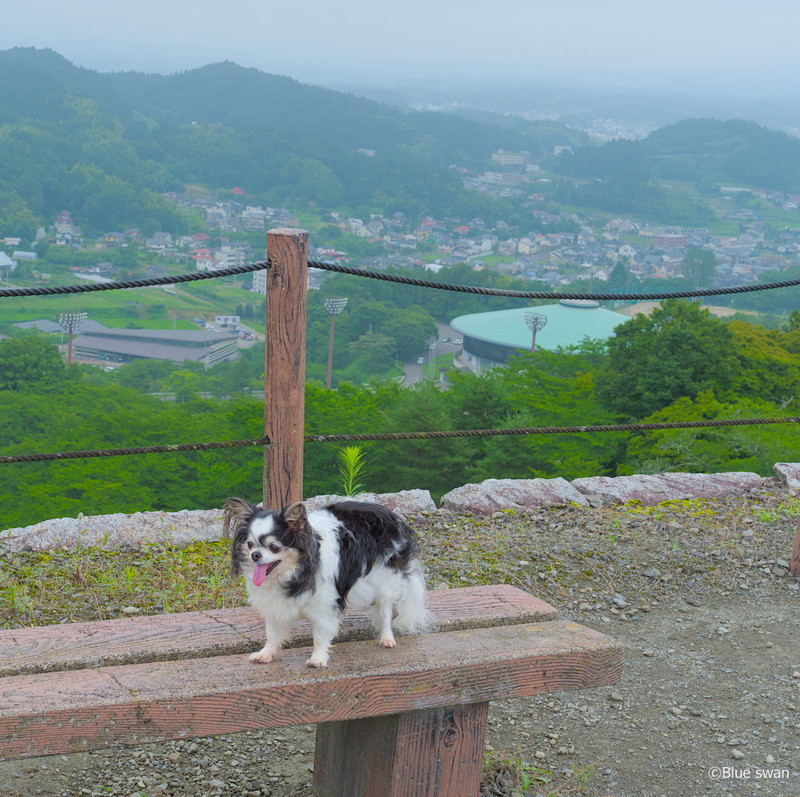
⑯ I am on a bench facing east.
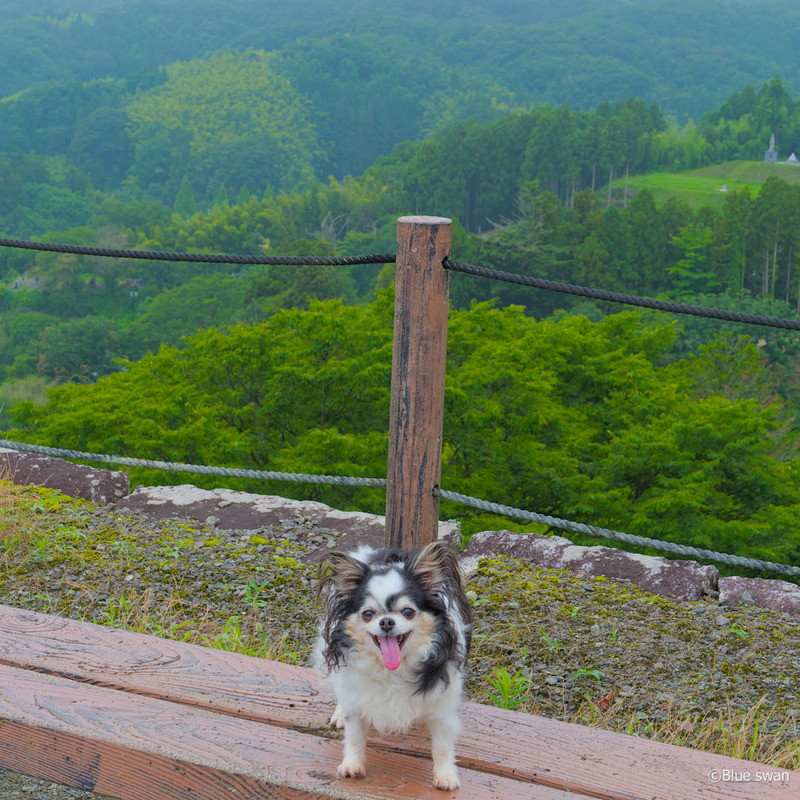
⑰ I am on a bench facing north.
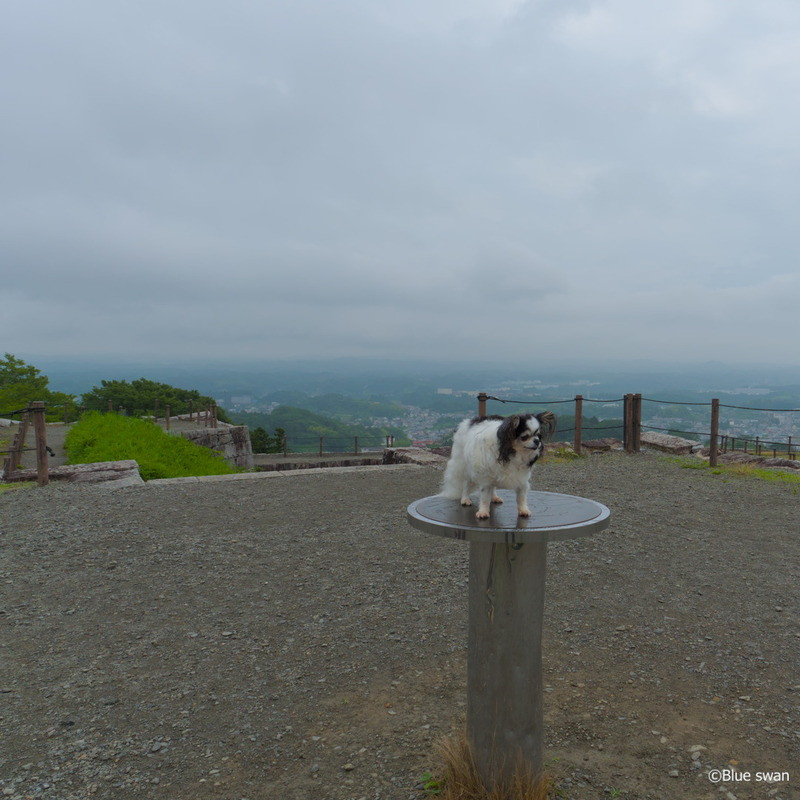
⑱ I tried sitting on a round table.
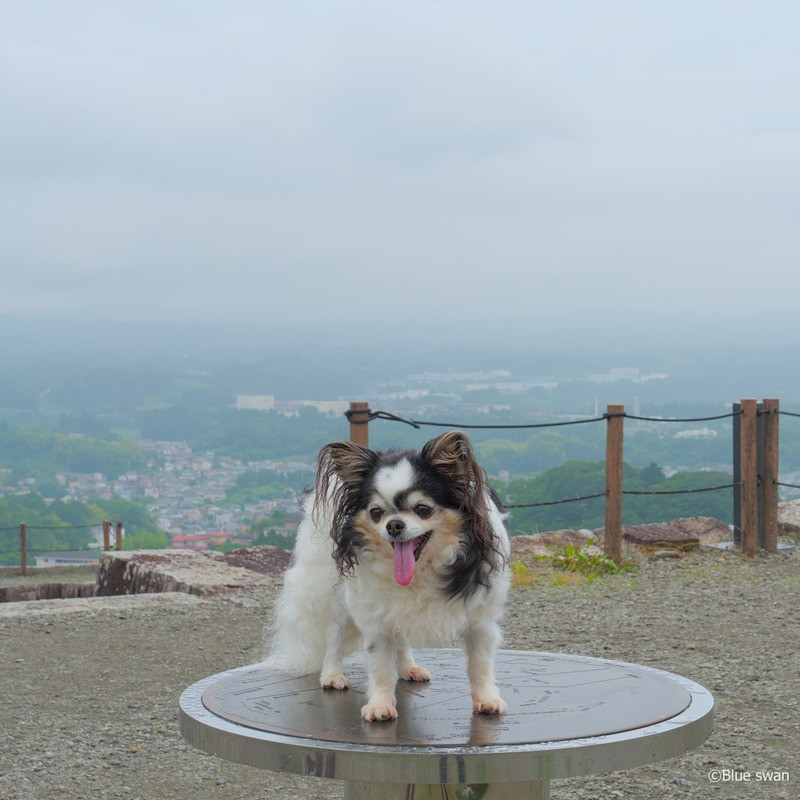
⑲ This is a close-up photo

⑳ This is a table with the information on it.
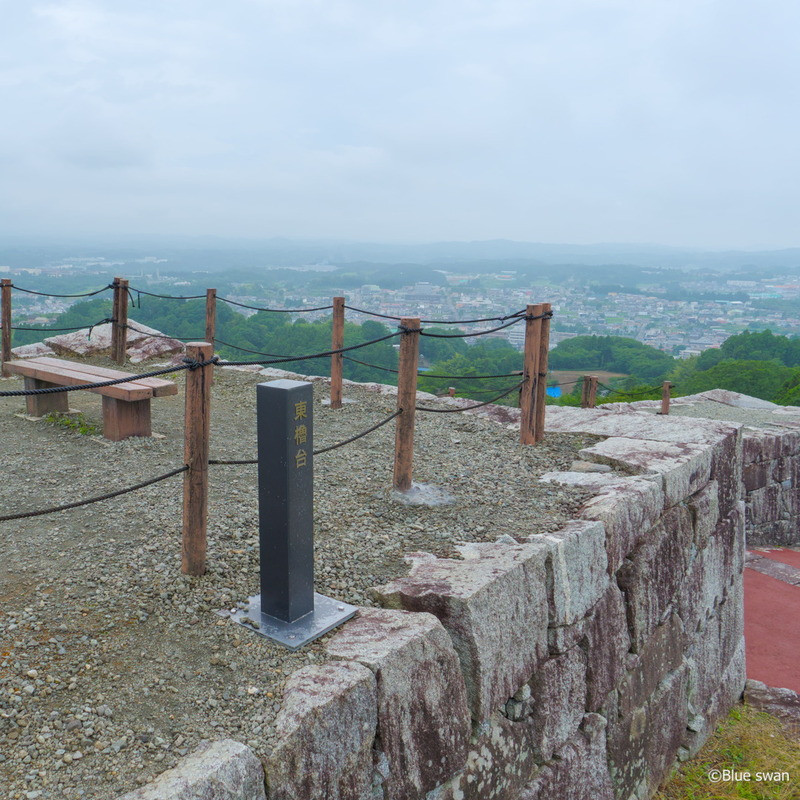
㉑ The East Tower Base is visible. I’ll get closer.
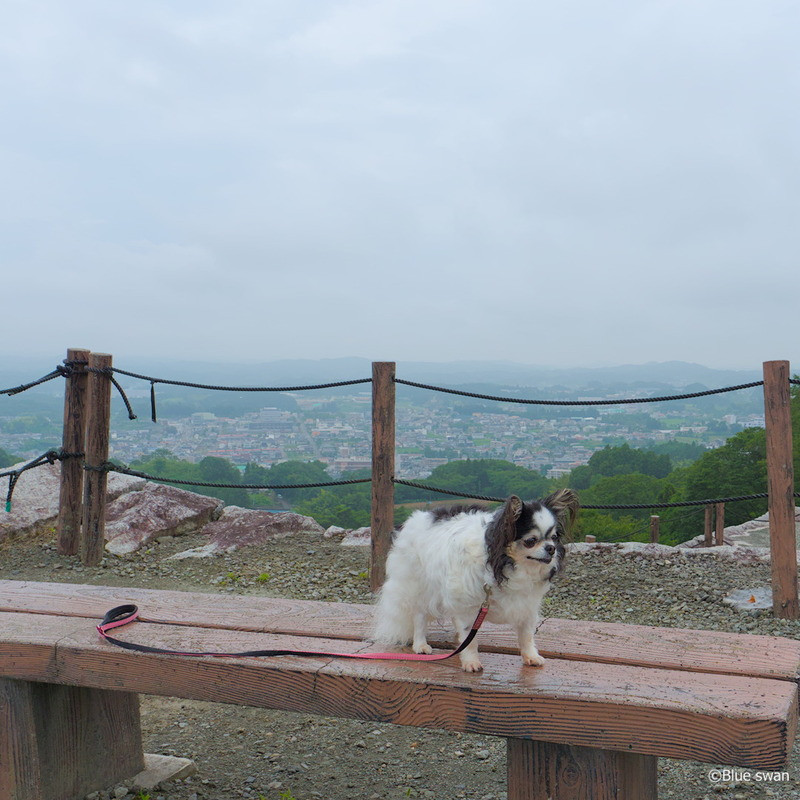
㉒ I’m on a bench at the East Tower Base. Now we're going down the mountain and heading towards Minowa Gate.

㉓ These are Nikai Turret (left), Minowa Gate (center) and Tamon Turret (right).
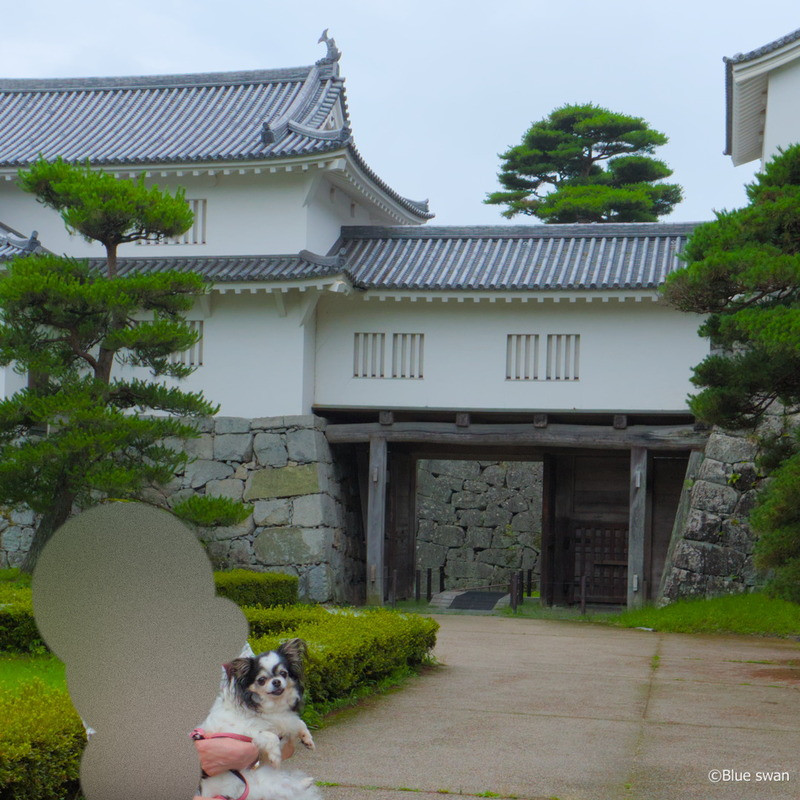
㉔I’m in front of Minowa Gate. This concludes our itinerary.
Nihonmatsu Castle (also known as Kasumigajo Castle) was renovated extensively by Niwa Mitsushige (丹羽光重公), the first lord of Nihonmatsu Domain from 1643, but most of the buildings were lost in the Boshin War in 1868. In 1872, all remaining buildings were destroyed by the castle abolition order.
In 1982, the Nikai Yagura (二階櫓, two-story turret), Minowamon Gate (箕輪門), and Tamon Yagura (多門櫓) were restored with concrete.
The castle tower and the stone walls of the main citadel were developed from 1993 to 1995 at a cost of 530 million yen.
Currently, the ruins of Nihonmatsu Castle are the prefectural Kasumigajo Park (nationally designated historic site in 2007).
Nihonmatsu Castle, Tsuruga Castle, and Shirakawa-Komine Castle in Fukushima Prefecture are included in the “100 Greatest Castles in Japan” selected by the Japan Castle Foundation in 2017.
Kasumigajo Park is home to about 2,500 cherry trees in spring, and it is the venue for the "Nihonmatsu Chrysanthemum Dolls" festival in autumn.
Nihonmatsu Castle is a mountain castle, and to reach the remains of the castle tower, you must climb 100m up a slope from the parking lot. I also climbed the slope, which was exhausting.
Near the castle tower base, we met an elderly woman with a dog. She said to us, “I come here every day for my health.” She was carrying a bell. She said, “This is because there are some antelope around here, though there are no bears luckily.”

① This is Kasumigaike Pond (霞ヶ池). The thatched roof building is Senshintei (洗心亭). The wisteria vine on the right was transplanted from Chieko's childhood home.
※Chieko refers to a female Western-style painter "Takamura Chieko (高村智恵子)". She was born in Nihonmatsu City and was active in Tokyo from the end of the Meiji period to the Taisho period. She is better known as the protagonist of “Chieko Sho," (智恵子抄)" written by her husband, Takamura Kotaro (高村光太郎).

② These are water lilies at Kasumigaike Pond.

③ I am in front of the pond.

④ We've reached the trailhead which leads to the ruins of Nihonmatsu Castle. From here, we'll start climbing the hill.

⑤ I am in the square in front of a gazebo.

⑥ I am in front of the gazebo.

⑦ This is “Hikage Well (Sunlit Well)”. It is said to be one of Japan's three great wells, along with “Tsukikage Well (Moonlit Well)” in Chiba Prefecture and “Hoshikage Well (Starlit Well)” in Kanagawa Prefecture, and is 16m deep. This well was built around 1400.

⑧ You can see the two-tiered stone wall. The grass-covered area below is the large stone wall.

⑨ I’m walking up the large stone wall.

⑩ I’m climbing up the large stone wall.

⑪ There are two more steps.

⑫ This is a photo of the remains of the main castle. You can see the Nishi Yaguradai in the back right. If it's clear, you can see Mt. Adatara there, too.

⑬ I am at the remains of the main citadel. The castle tower base can be seen in the background.

⑭ We’ve reached the castle tower base. This is the summit.

⑮ I’m looking east. The large green roof is Shiroyama Comprehensive Gym.

⑯ I am on a bench facing east.

⑰ I am on a bench facing north.

⑱ I tried sitting on a round table.

⑲ This is a close-up photo

⑳ This is a table with the information on it.

㉑ The East Tower Base is visible. I’ll get closer.

㉒ I’m on a bench at the East Tower Base. Now we're going down the mountain and heading towards Minowa Gate.

㉓ These are Nikai Turret (left), Minowa Gate (center) and Tamon Turret (right).

㉔I’m in front of Minowa Gate. This concludes our itinerary.
